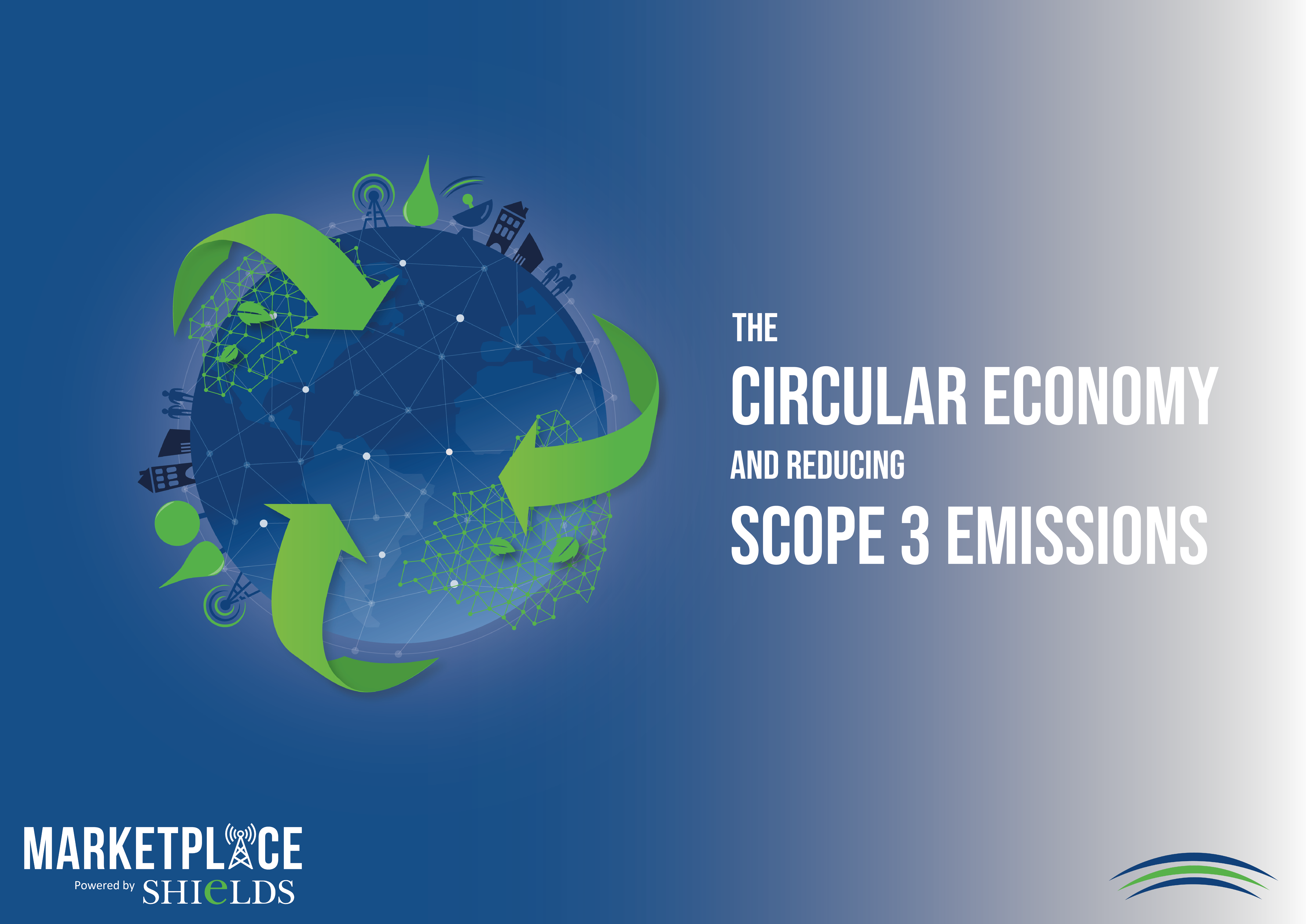Reducing our CO2 emissions is an essential part of the future of our businesses. Tackling scope one and two emissions is often easier for businesses to act on and evidence. But it can be challenging for businesses to demonstrate that they are reducing their scope 3 emissions. Our circular economy solution and avoidance certificates can help, read our latest article to find out more.
Shields’ mission is to enable telecommunication network operators to provide their customers with the best possible service while limiting their environmental impact. At the core of this goal is our MarketPlace software, a revolutionary platform that offers operators an alternative equipment procurement strategy that creates a circular economy and supports businesses to drive down their scope 3 emissions.
The Circular Economy
The circular economy is essential in solving the climate crisis as it focuses on prolonging the lifecycle of existing assets rather than continually manufacturing new products. The circular economy offered by MarketPlace can substantially reduce the need for operators to rely on original equipment manufacturers (OEMs) to fulfil their equipment needs. Instead, MarketPlace provides clients with a global view of all the assets available within a specific country so that procurement teams can select existing products that have been refurbished or repaired.
This alternative buying strategy limits the raw materials that need to be extracted, lowers the number of items that must be manufactured and reduces the need for shipping from overseas. This, in turn, significantly reduces the scope 3 emissions associated with the operator and offers a more sustainable procurement model.
Scope 3 Emissions
Scope 3 emissions are the indirect emissions that occur in a company’s value chain. There are 15 categories incorporated within scope 3 emissions, including ‘purchased goods and services, ‘upstream transportation and distribution’ and ‘waste generated in operations.’ For telecommunication network operators, scope 3 emissions represent the largest share of their CO2e footprint, and in some cases, they may account for over 80% of their total output.
Engaging with the circular economy and reducing the reliance on CO2e-intensive equipment manufacturing can play a key role in facilitating this figure and limiting the environmental impact of the telecommunication industry as a whole. A recent study by Zevero showed that there was, on average, an 89% CO2e/kg saving for every asset reused by MarketPlace (powered by Shields) under the system boundary used. Shields also estimates that 20% of the average network operator’s equipment needs can be fulfilled via the MarketPlace model. This means that, by joining the circular economy, operators could significantly reduce their emissions and make a positive contribution to global net-zero targets.
Introducing the Shields Avoidance Certificate
We have developed the Shields Avoidance Certificate to highlight the benefits of investing in the circular economy and integrating reused and refurbished equipment into the buying strategy. The Shields Avoidance Certificate has been designed to evidence the carbon savings made based on the total weight of the assets purchased through MarketPlace rather than the OEM.
The Certificate can be used by network operators as part of their scope 3 emissions reporting. The annual Certificate details the business’s total CO2e avoidance and includes a complete breakdown of the internal reuse, group reuse and other savings made through the sale of assets to external parties.
As well as quantifying scope 3 emissions, the Shields Avoidance Certificate can support telecommunication operators’ environmental, social and governance (ESG) strategies. The data within the Certificate offers tangible evidence of the improvements made to the company’s carbon output as a result of being part of the circular economy.
The Certificate can also be used to highlight the brand’s commitment to the environment to key stakeholders. The climate crisis has led to many potential employees and consumers becoming more discerning with regards to the sustainability credentials of the brands they engage with. As such, a visual representation of the business’s commitment to more sustainable practices may be invaluable to remain competitive as both a supplier and an employer.
Our dedicated sales team can help you find the best way for your business to engage with the circular economy and drive down emissions and costs. Contact the team for more information here.

